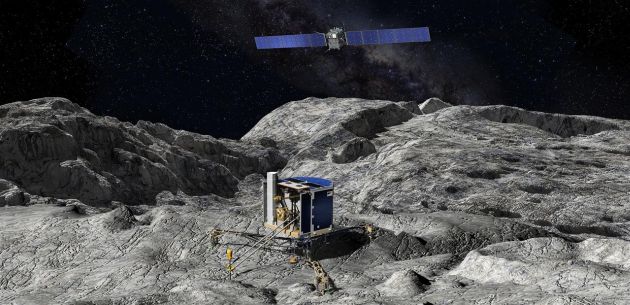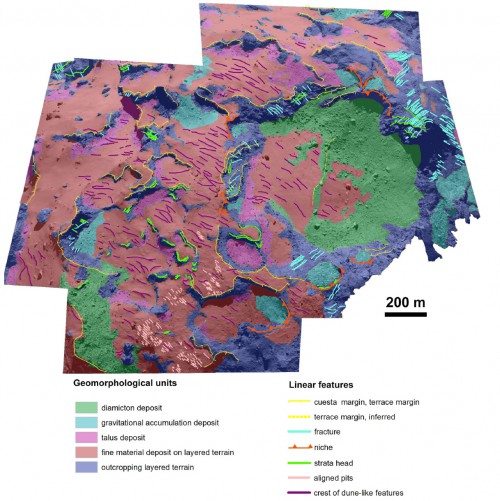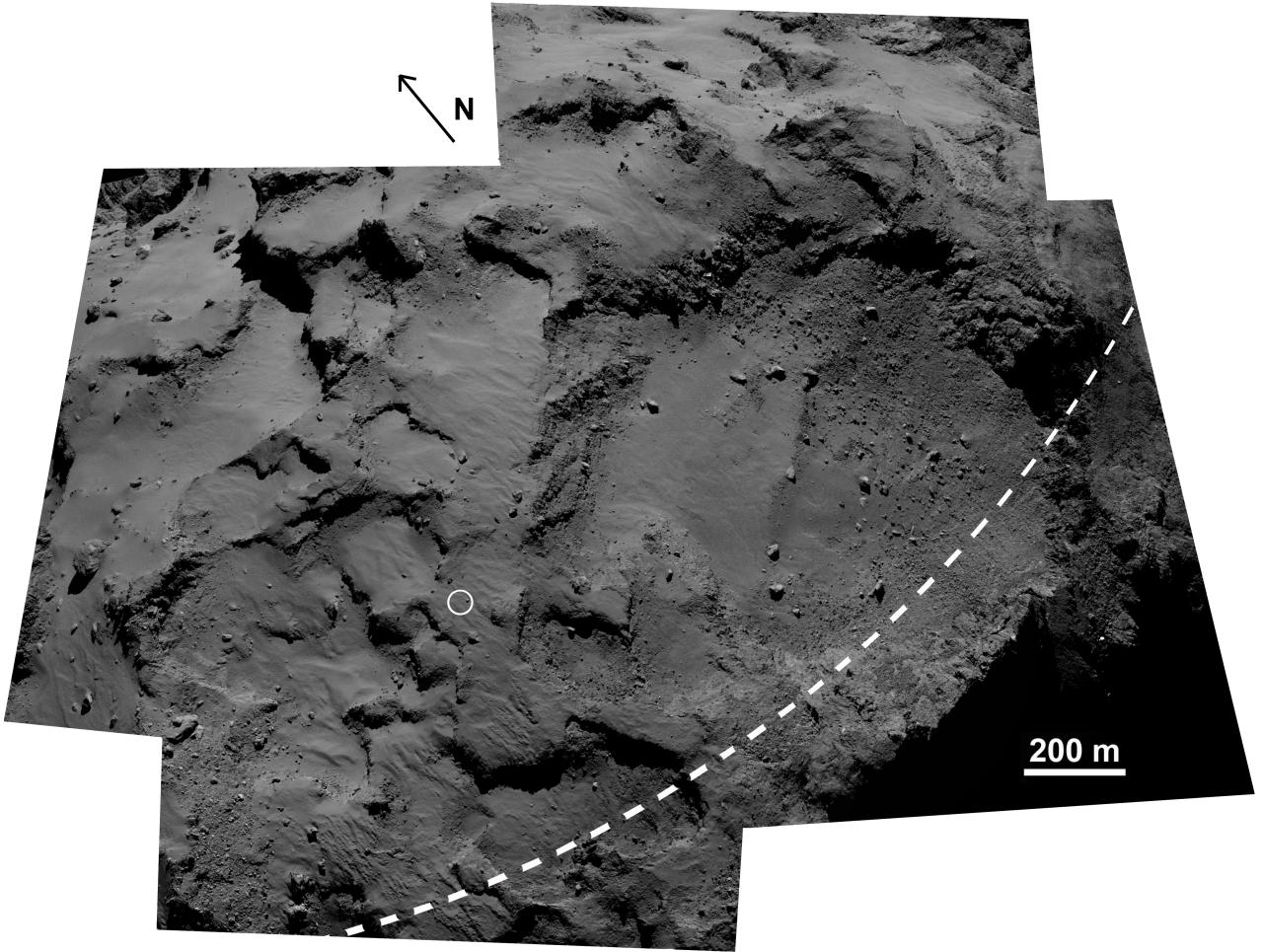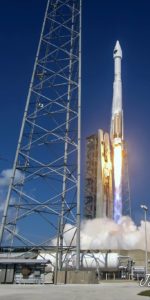
The European Space Agency’s (ESA) Rosetta mission continues to capture the world’s imagination one year following the historic touchdown(s) of its Philae lander. On Nov. 12, Philae surpassed its one-year anniversary at its final landing site, Abydos, where it came to rest after bouncing twice on Comet 67P/Churyumov-Gerasimenko. ESA recently released an animation depicting Philae’s sometimes chaotic landing sequence, as well as a video discussing Rosetta’s science findings one year following the landing. Moreover, an article published in the Astronomy and Astrophysics journal detailed surface conditions on Philae’s initial landing site, Agilkia.
At Home For A Year On A Comet
It was the lander that thrilled the world, and its journey to a comet’s surface was no less thrilling. Following its seven-hour descent to Comet 67P’s surface after its release from the Rosetta orbiter, Philae made one of the most dramatic landings on any celestial body in spaceflight history. With the aid of data gleaned from Philae’s instruments, a reconstruction of the lander’s final landing sequence on Nov. 12, 2014, was released by ESA this week.
ESA detailed, “Philae’s first touchdown on the comet (TD1) at 15:35 UT is constrained by a very precise knowledge of its landing position and orientation based on ROLIS images, the times at which the three feet contacted the surface as measured by SESAME, the vertical dynamics from the damping tube housekeeping data, lander dynamics simulations explaining the footprints imaged later by OSIRIS, outbound attitude reconstructed from ROMAP and RPC-MAG data, and the outbound velocity vector based on a trajectory reconstruction.”
Video Credit: The European Space Agency on YouTube
The animation shows how Philae started “flying” again after its landing harpoons failed to deploy as planned. The lander entered into a tumble due to angular momentum after its stabilizing flywheel was turned off; in addition, one of its legs collided with the rim of the Hatmehit crater. The animation vividly depicts this torturous sequence. ESA divulged that this behavior was also captured by the ROMAP instrument. Fortunately, the lander was able to “right” itself again, and finally landed at Abydos at 17:31 UT, nearly two hours following its first touchdown.
Jens Biele, the lead author of an article entitled “The landing(s) of Philae and inferences about comet surface mechanical properties” (published in Science), enthused: “With hindsight, one year later, and watching the movie, I am astonished how lucky we were! But we learned a lot about the surface mechanical properties from these bounces, and Philae finally landed in an interesting terrain where we would have never dared to land in the first place!” ESA stated that more findings concerning the data will be published in Acta Astronautica.
Rosetta’s science findings in the year since Philae landed were also highlighted in another ESA video. In an interesting note, brief audio snippets from Philae’s SESAME-CASSE (Cometary Acoustic Surface Sounding Experiment) were also released. The experiment “listened” to the hammering of the MUPUS (Multi-Purpose Sensors for Surface and Subsurface Science) device for two hours and 15 minutes. This sound experiment was instrumental in determining that Philae’s three feet were engaged on the comet’s surface and, according to ESA, is the first seismic experiment to take place on an extraterrestrial body since ones conducted during Apollo 17’s time on the Moon in Dec. 1972.
A More Detailed Picture of Agilkia
A paper published in Astronomy and Astrophysics called “Geomorphology and Spectrophotometry of Philae’s Landing Site on Comet 67P Churyumov-Gerasimenko” shed light upon features at Philae’s initial landing site, Agilkia, observed by the Rosetta’s OSIRIS science camera. Philae did touch down in its planned site, but, of course, famously started “bouncing.”

ESA gave a summary of the findings: “From OSIRIS images, we see that Ma’at [a region of Agilkia], and the neighboring region Nut, are mainly covered by smooth deposits of fine-grained material. The size of these grains was revealed by the ROLIS images from Philae to be of the order of a few centimeters. Although the depth of this layer is unknown it is probably highly variable across the comet: a 35 meter-wide impact crater in the Ash region shows that the depth there may reach several meters, whereas in other places, the view across walls of more compacted material suggests that the layer is thin.” It is theorized that the layer may be caused by “airfall,” which is caused when dust is ejected from its surface, but falls back.
In addition, pitting was noticed in the region, which is theorized to have possibly been caused by the presence of ice excavating the pits. Local gravity and photometric properties of the region were also noted in the paper. Smooth areas were found to be more reflective than the craggier “outcropping” areas. It is hoped this study will aid researchers and scientists in determining how the behavior of this region contributes to a further global understanding of Comet 67P.
*****
While Philae has been out of touch with the Rosetta orbiter and therefore Earth since July, the lander team at DLR stated in a short video on Twitter that the orbiter is once again getting closer to the comet, increasing the likelihood of further communications with Philae. It is still hoped that Philae’s story isn’t yet over, since the Rosetta science mission has been extended through September 2016.

Be sure to “Like” AmericaSpace on Facebook and follow us on Twitter: @AmericaSpace
.
Missions » Rosetta »




It’s hard to believe it’s been a year!